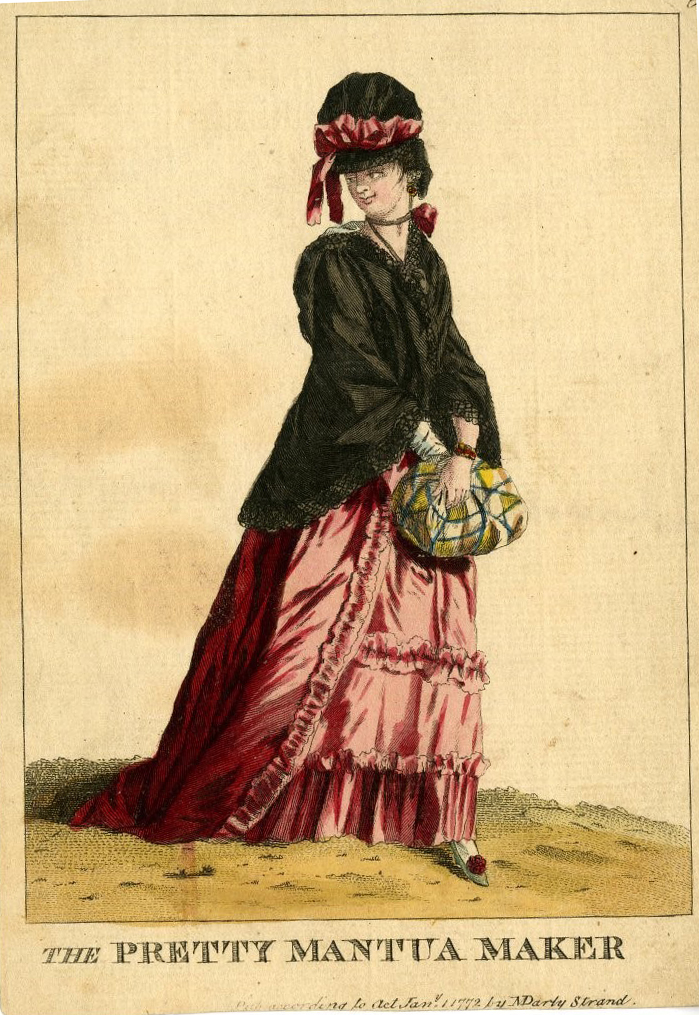Indenture Mining: Making Pre-Industrial Tradeswomen Visible (Part II)
This installment is a continuation of a previous article, visit part one here.
Finding information about female apprentices in early modern period was more difficult than I imagined. Beginning with the Museum of Early Southern Decorative Arts (MESDA) Craftsman Database Search, I was unable to find any records of the craftswomen listed in this book. I did, however, find evidence for 56 female artisans working in Philadelphia from 1775–1820, in the diverse trades of needlework, lapidary (gemcutting), pottery, tinsmithing, and gunsmithing. This answered one of my questions: tradeswomen may not have been common in the period, but they worked in a variety of industries and were recognized for work in their own right.

But what about female apprentices?
Having exhausted available contemporary newspapers, the MESDA database, and the collections search of the American Philosophical Society, I turned to secondary literature. I’d had no success finding any information about the 22 women apprenticed to trades besides housewifery, but would I have any luck finding general information about the practice and lives of female apprentices in colonial Philadelphia?
I did have luck there. What I found was that the lives of female apprentices in colonial Philadelphia were not the rosy and independent existences that I had envisioned. It was not unusual for a woman to take over her husband’s business following his death, or for family members to work in tandem at a given trade (Dexter; Bridenbaugh). But to be formally apprenticed to a trade was unusual for a woman, and it would have been a hard life of physical labor, insubstantial wages, and little-to-no privacy as female apprentices were required to live with their employer (Shammas). In the 1770s, Philadelphia was a pre-industrial city with many laborers and few employment positions to offer them (Salinger). It was crowded at the bottom of the social scale, and conditions for women were particularly unpleasant as their domestically-oriented work began to be devalued. Tradeswomen were more likely to end up in the almshouse than in a contemporary newspaper shop advertisement.
Making tradeswomen and their labor visible
This makes the documentation of female apprentices’ existence in the “Book of Record of Indentures of Individuals bound out as apprentices, servants, etc., and of German and other Redemptioners in the office of the Mayor of the City of Philadelphia from October 3rd, 1771 to October 5th, 1773” all the more valuable and exciting. These entries do not tell the whole story, but they do give visibility to the women’s lives that would not otherwise be available to those of us in the 21st century. What further stories could this volume contain?
Bibliography:
Bridenbaugh, Carl. The Colonial Craftsman. New York: New York University Press, 1950.
Dexter, Elisabeth Anthony. Colonial Women of Affairs: Women in Business and the Professions in America before 1776. Cambridge, MA: The Riverside Press, 1931.
Salinger, Sharon V. “‘Send No More Women’: Female Servants in Eighteenth-Century Philadelphia.” The Pennsylvania Magazine of History and Biography, Vol. 107, No. 1 (Jan., 1983), pp. 29-48. http://www.jstor.org/stable/20091738.
Shammas, Carole. “The Female Social Structure of Philadelphia in 1775.” The Pennsylvania Magazine of History and Biography, Vol. 107, No. 1 (Jan., 1983), pp. 69-83. http://www.jstor.org/stable/20091740.
Further reading about contemporary interpretation of female apprenticeship can be found in the work of Colonial Williamsburg, which features a working millinery shop and apprenticeship program for mantua-makers. See the CW blog for more details, as well as the 2004 Colonial Williamsburg Journal article “‘With All the Grace of the Sex’: Women in Trades” by Donna Dene Woodward.
More information about pre-industrial women and economies in various trades in Early America can be found in Laurel Thatcher Ulrich’s A Midwife’s Tale: The Life of Martha Ballard, Based on her Diary, 1785-1812 (New York: Alfred A. Knopf; 1990) and Marla R. Miller’s The Needle’s Eye: Women and Work in the Age of Revolution (Amherst, MA: University of Massachusetts Press, 2006).
